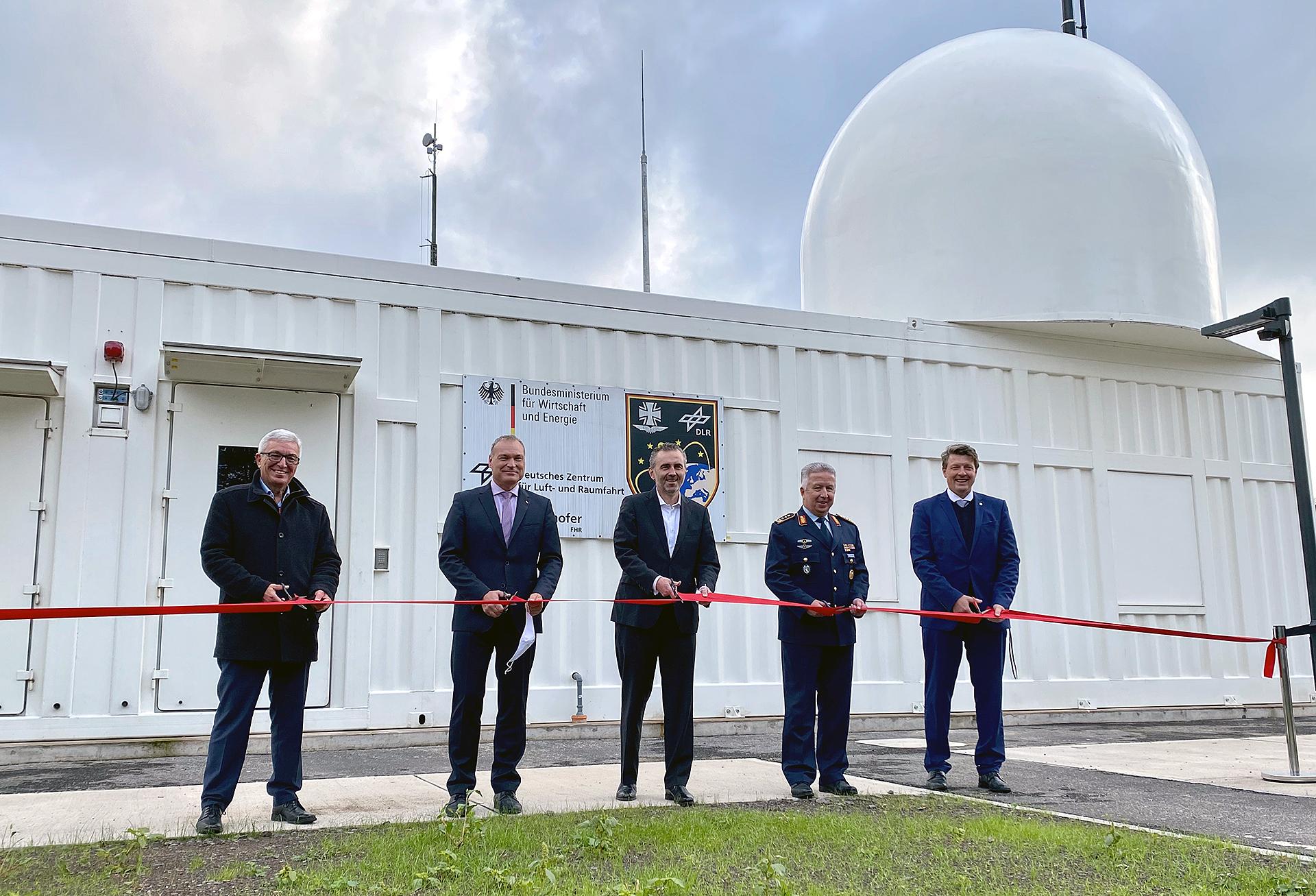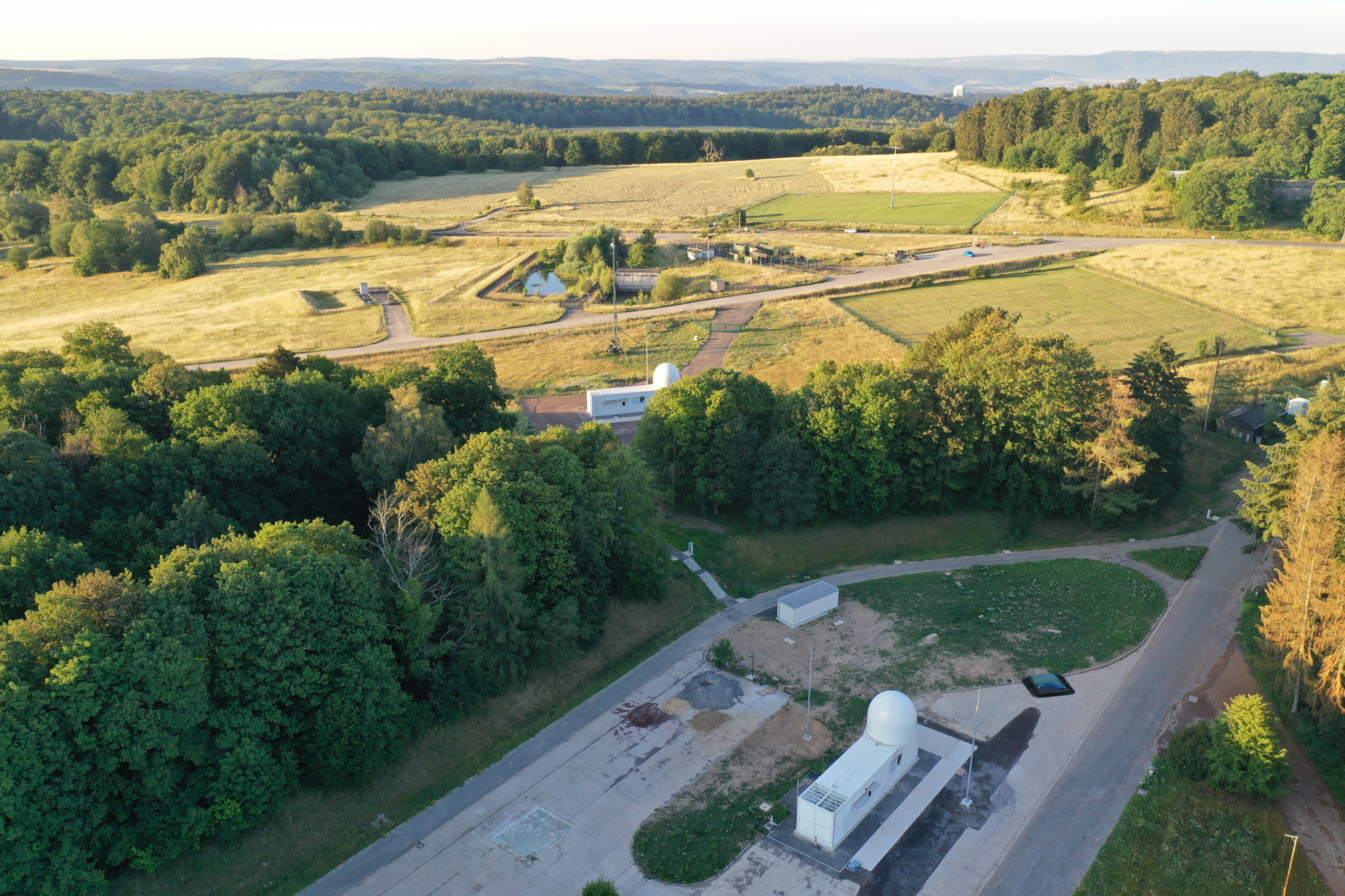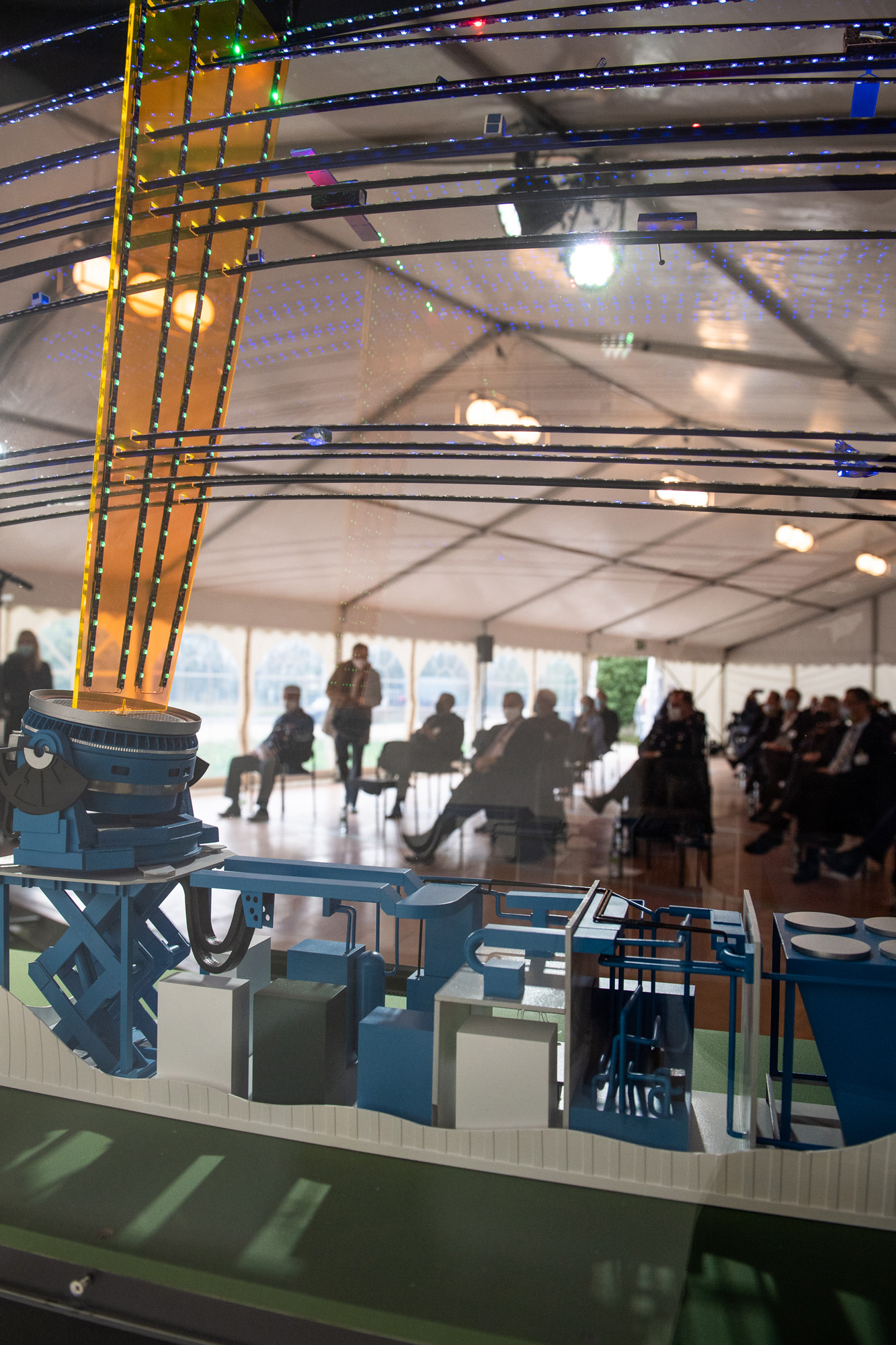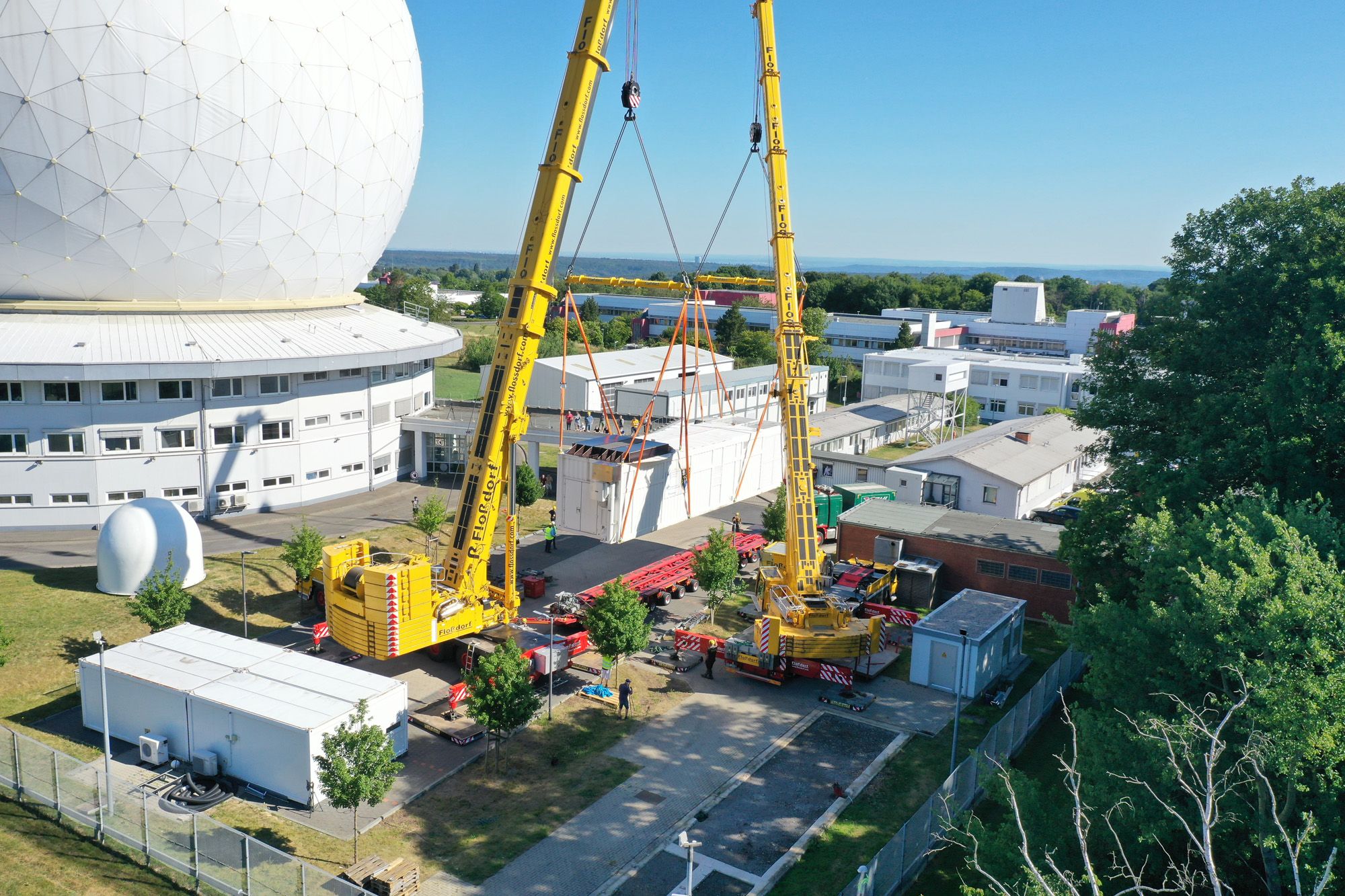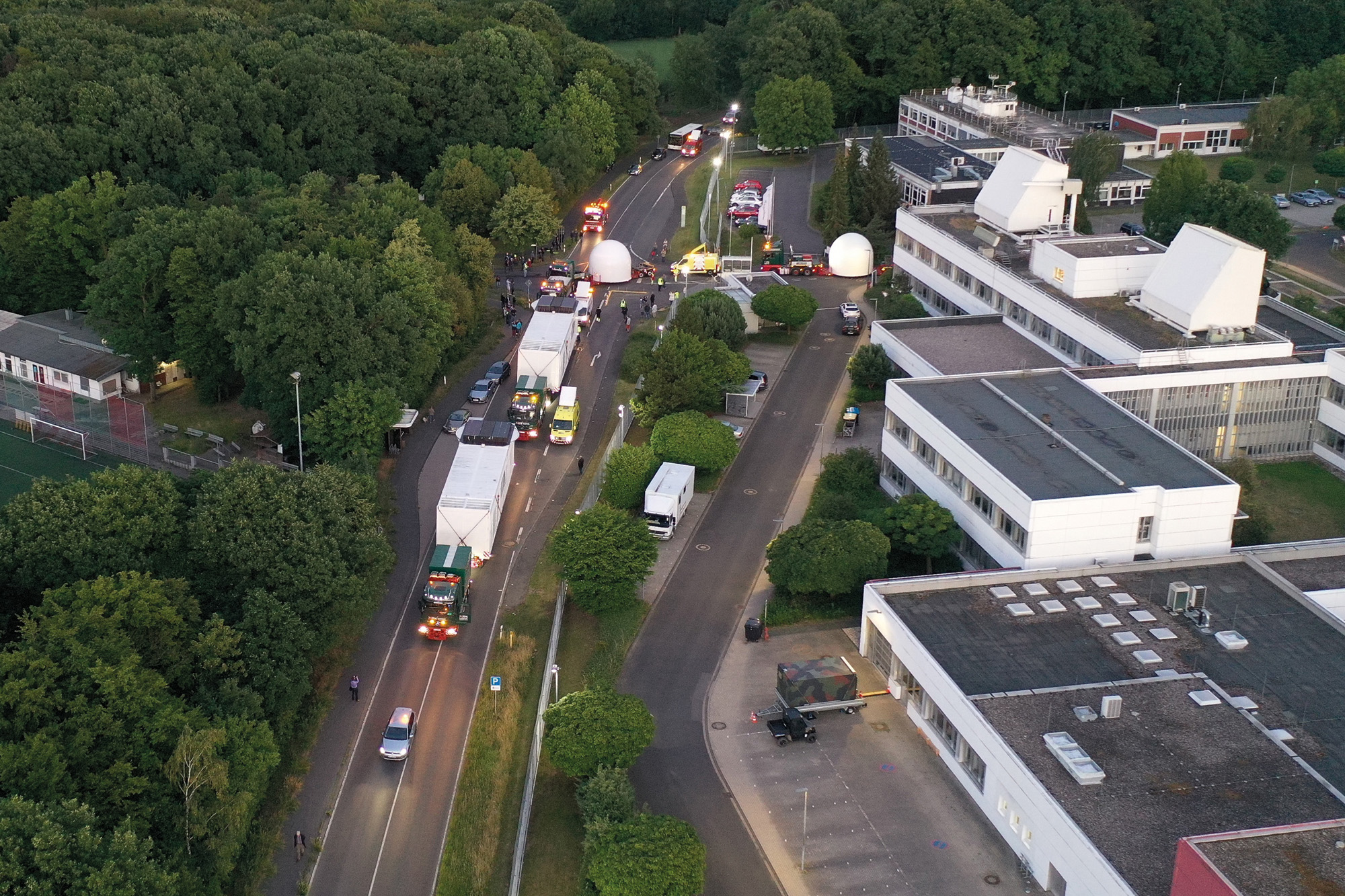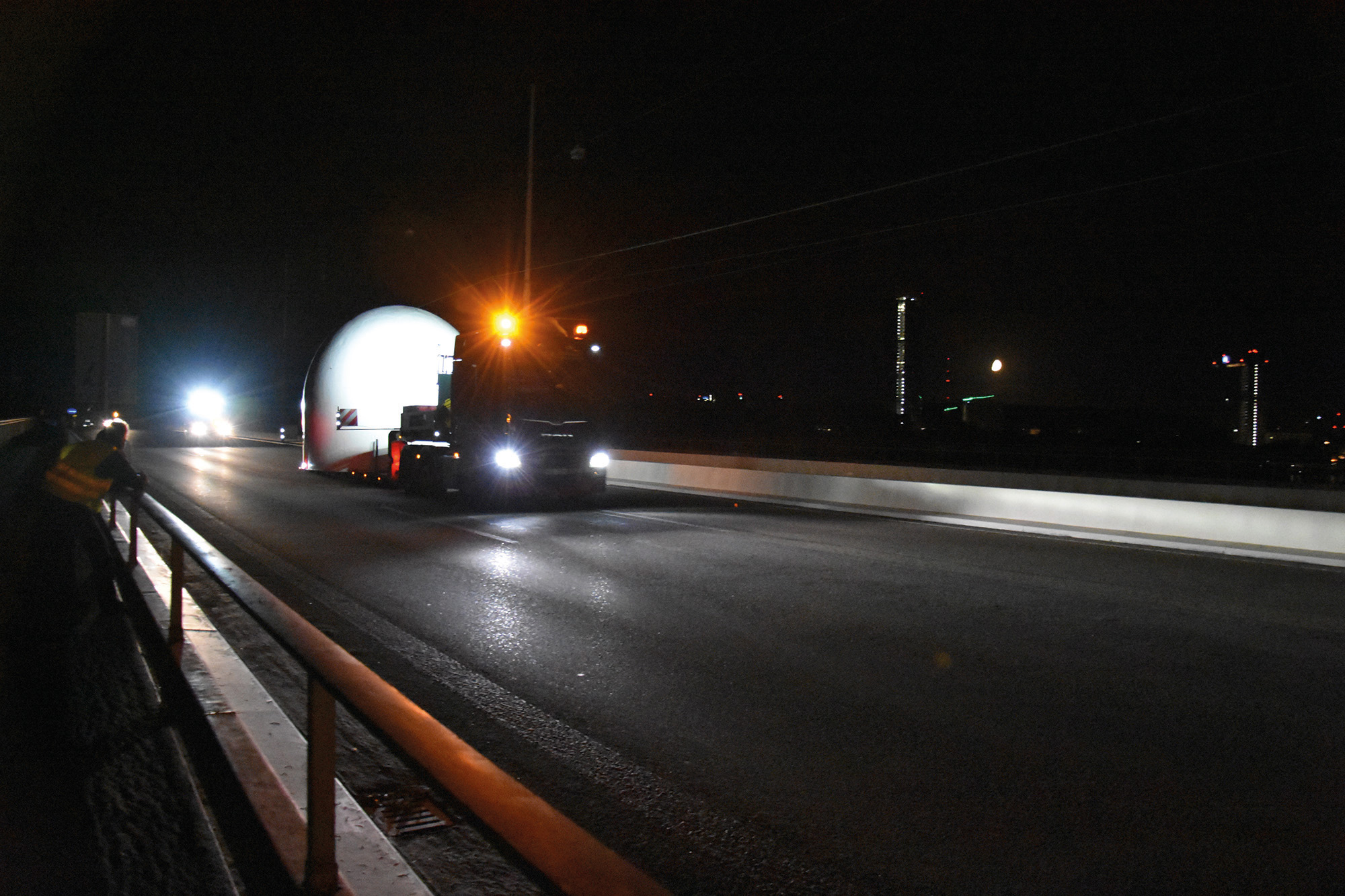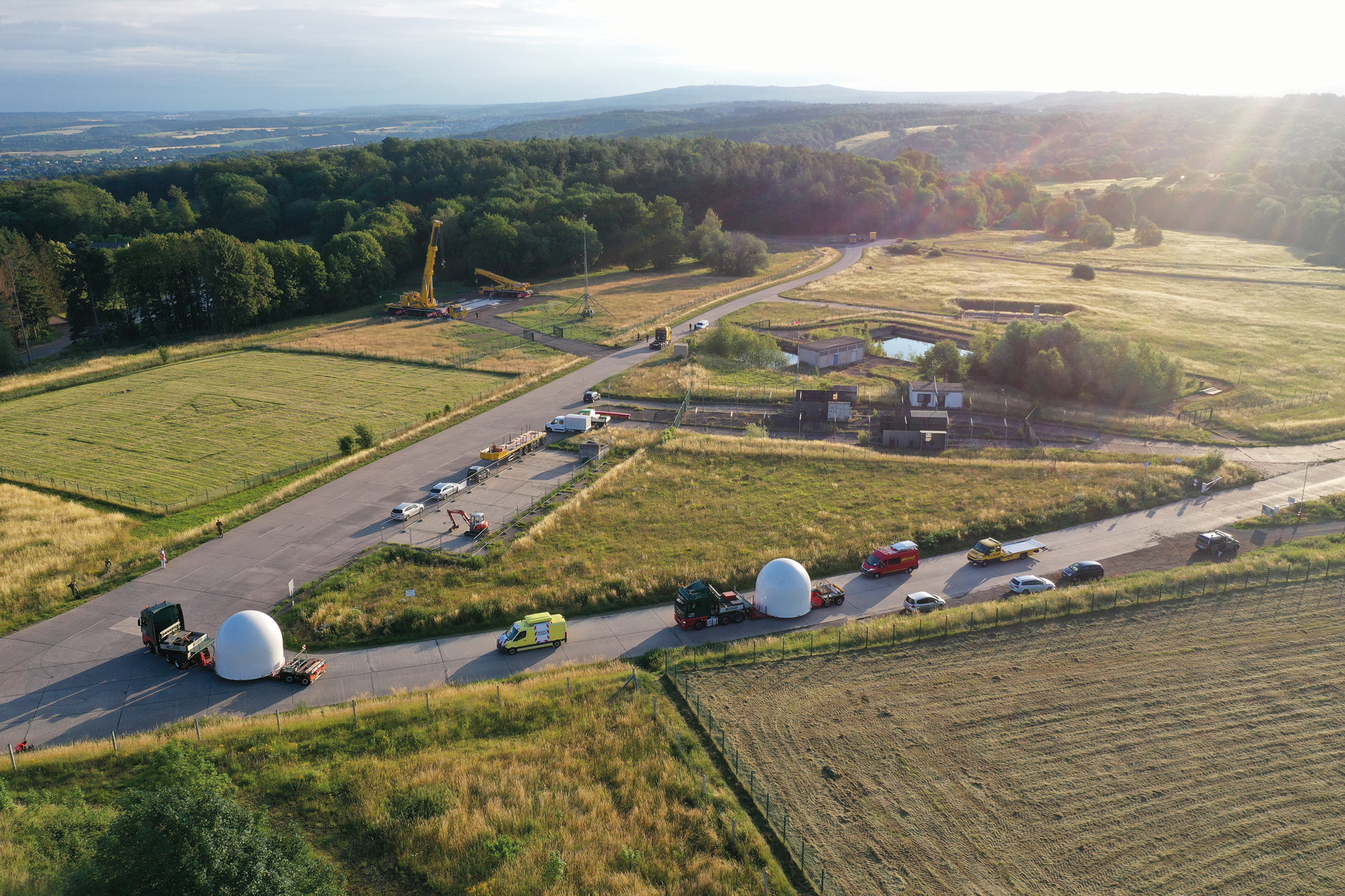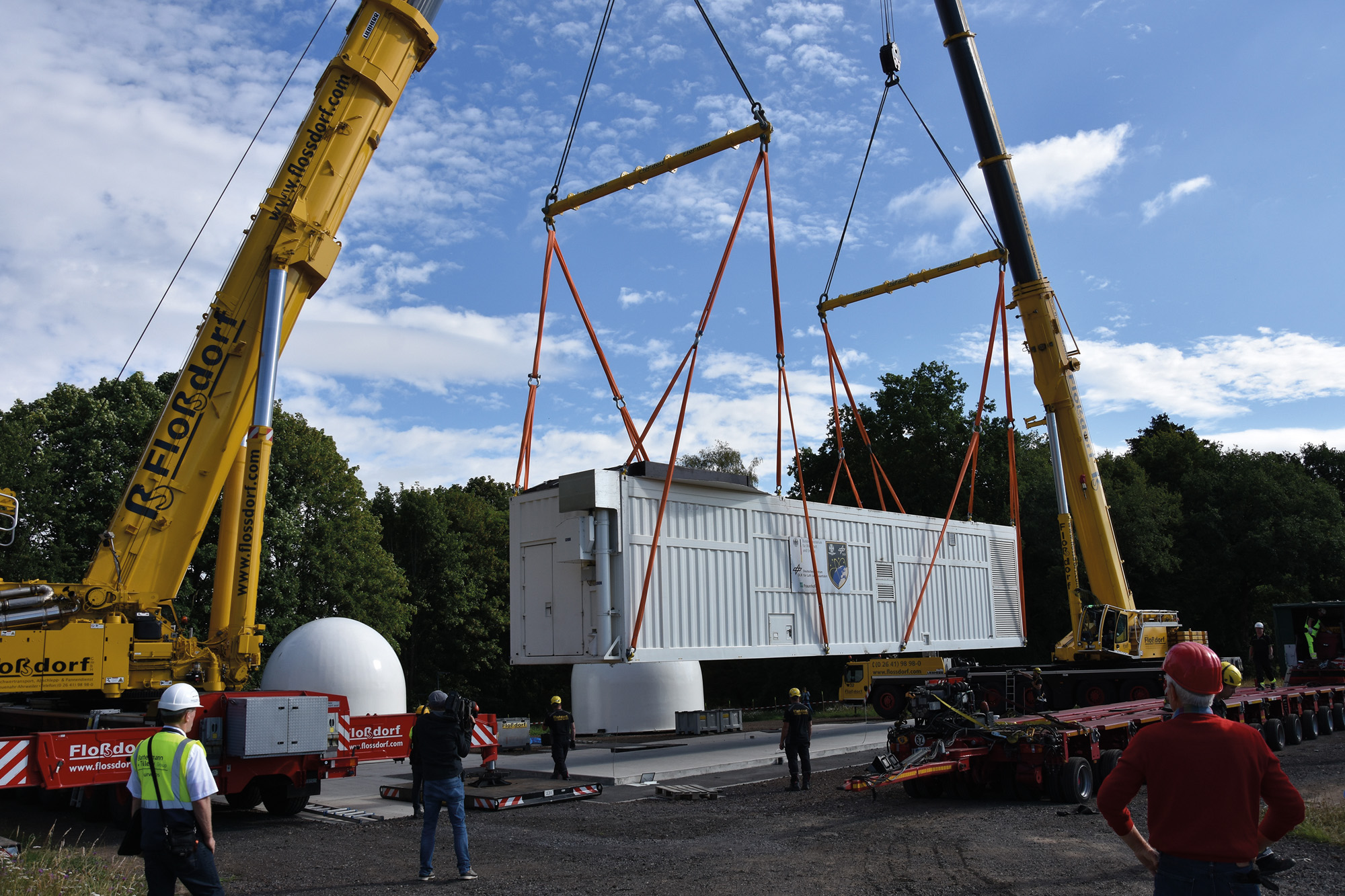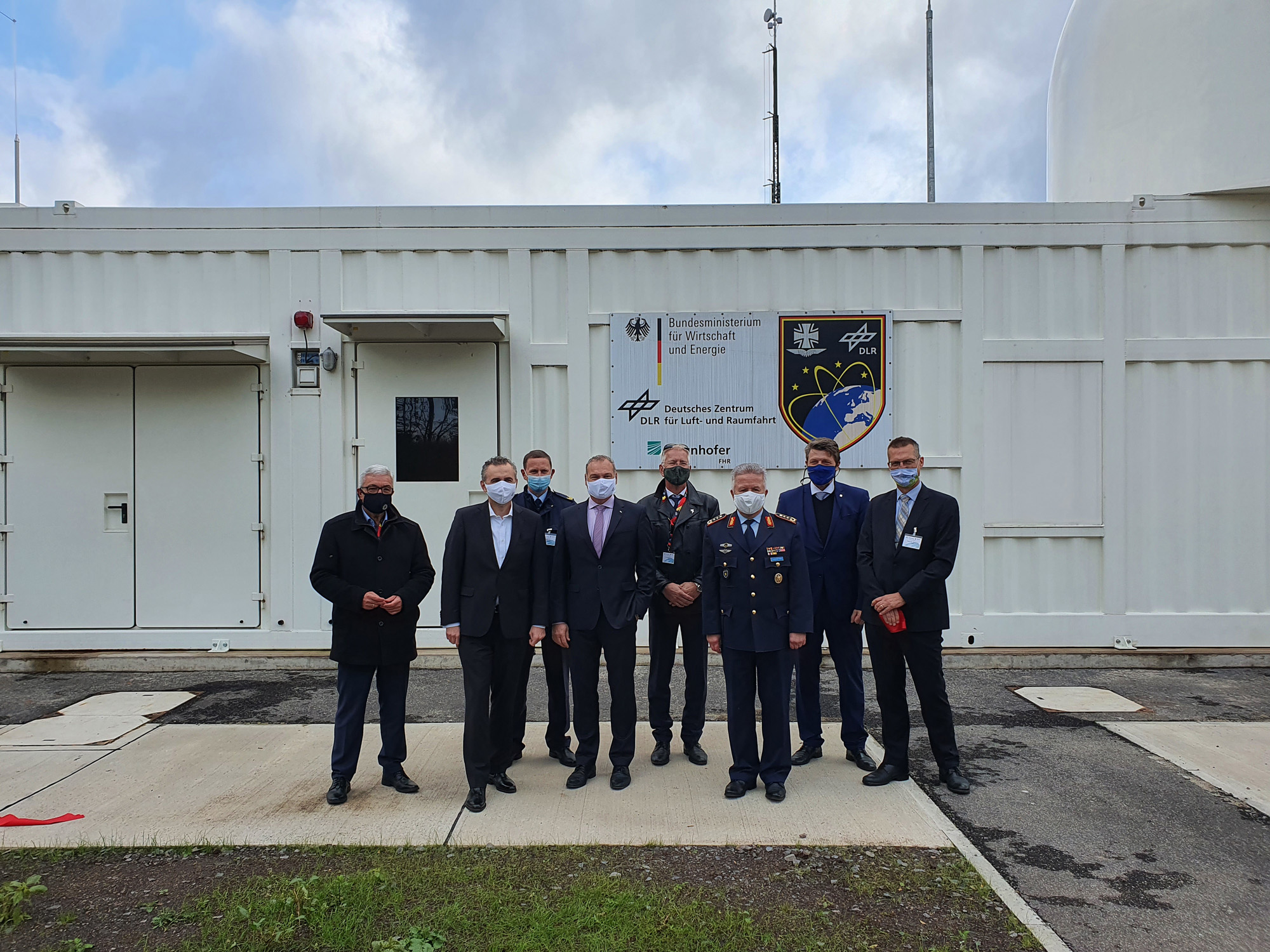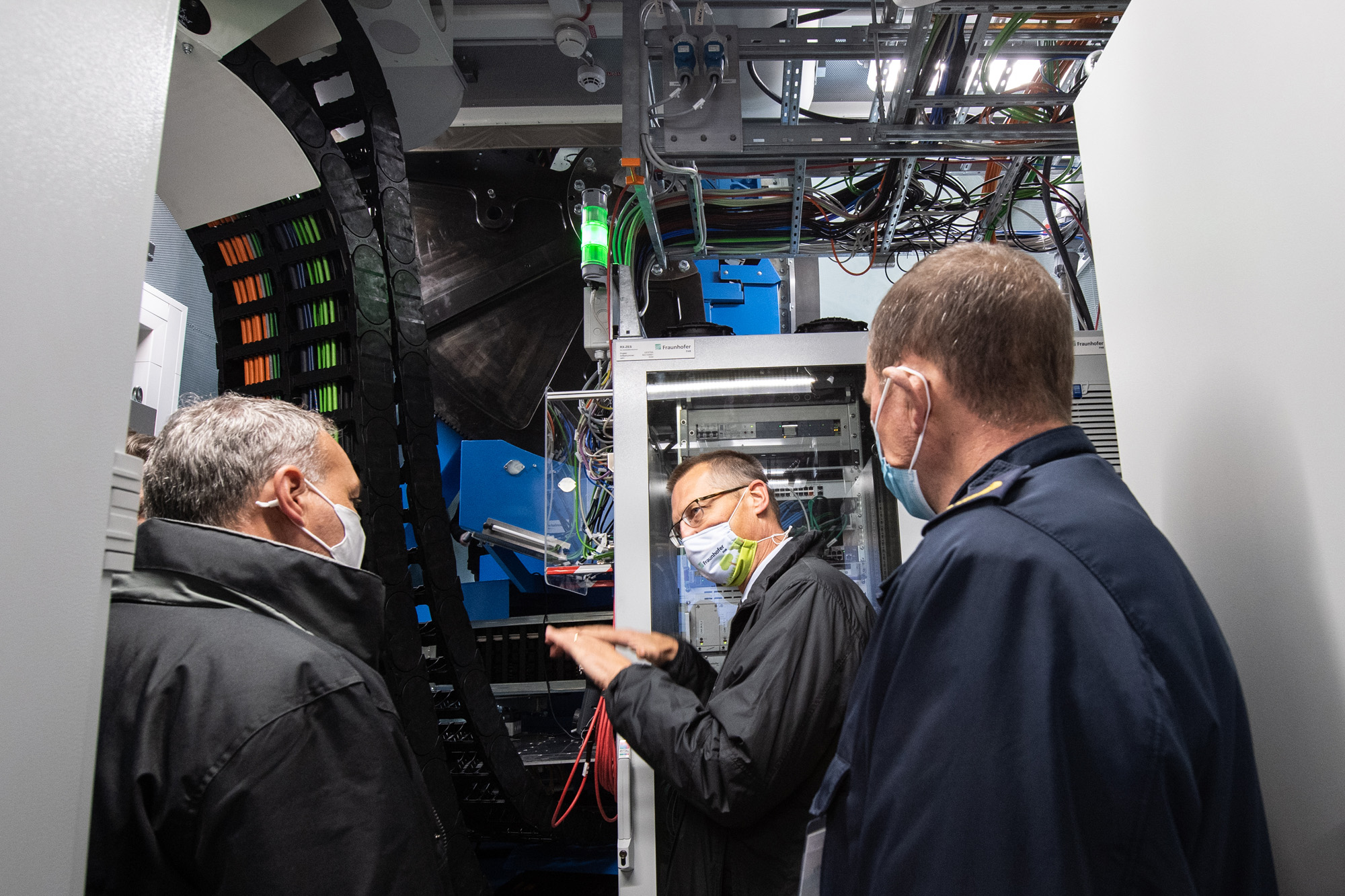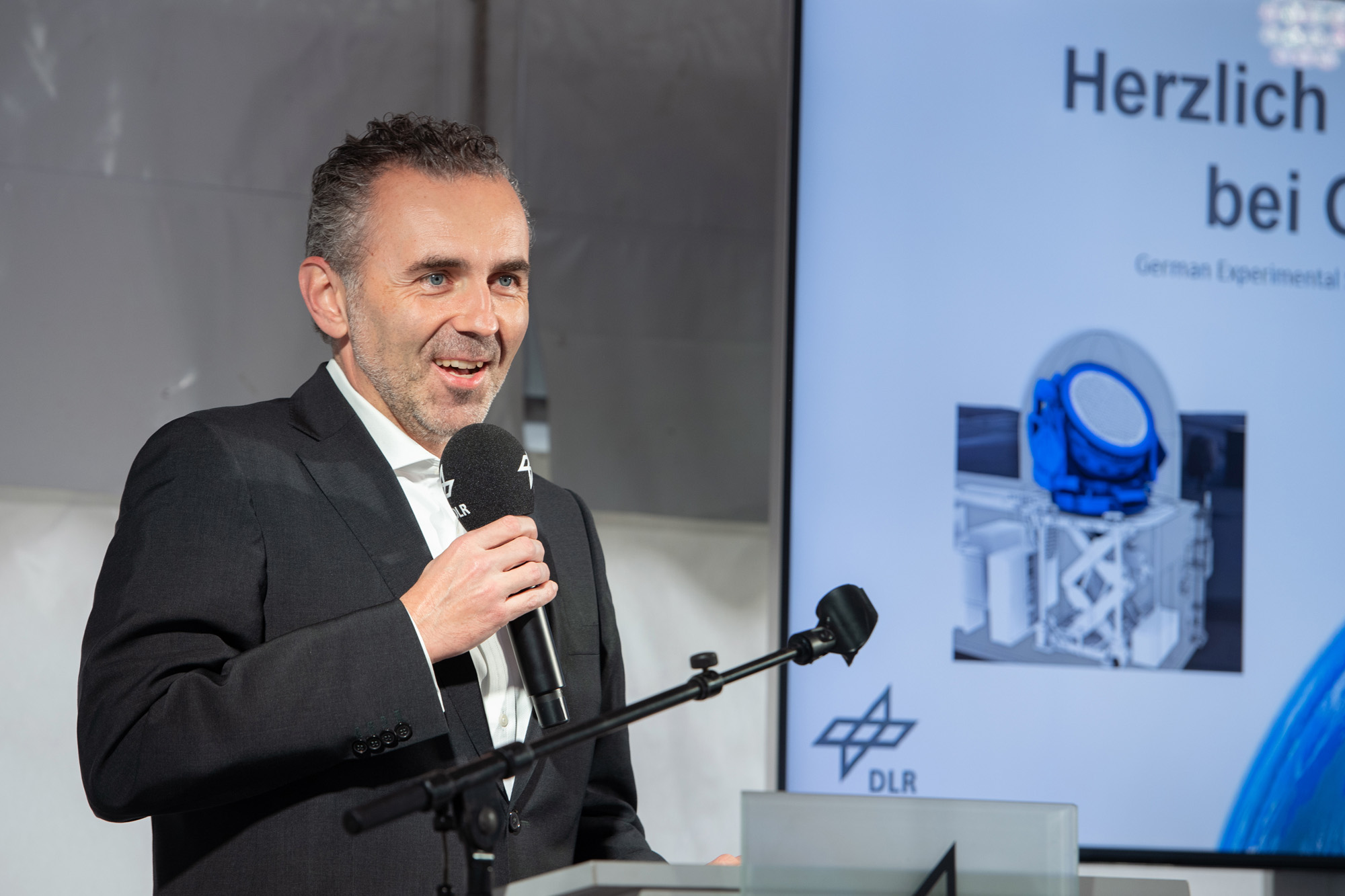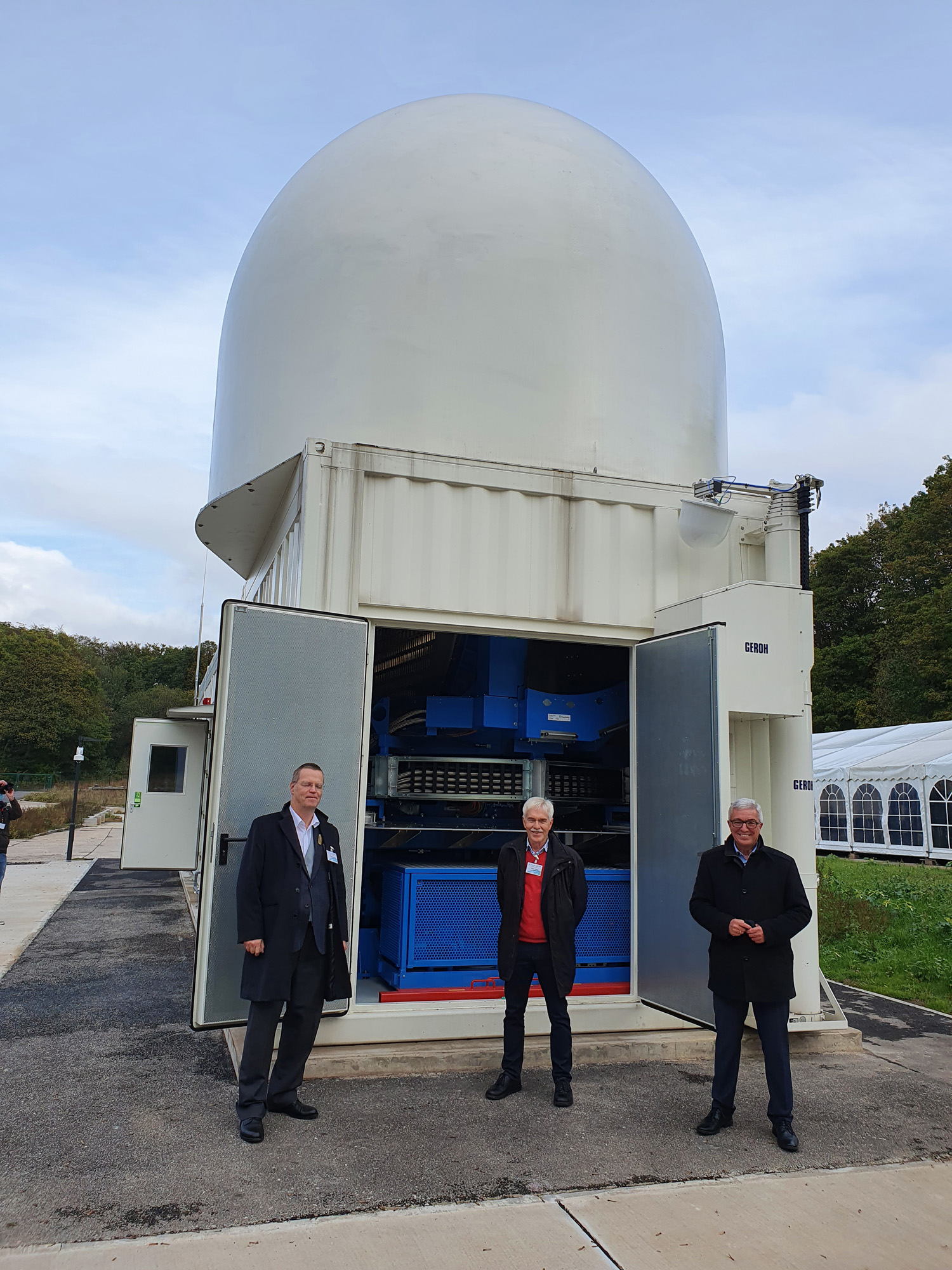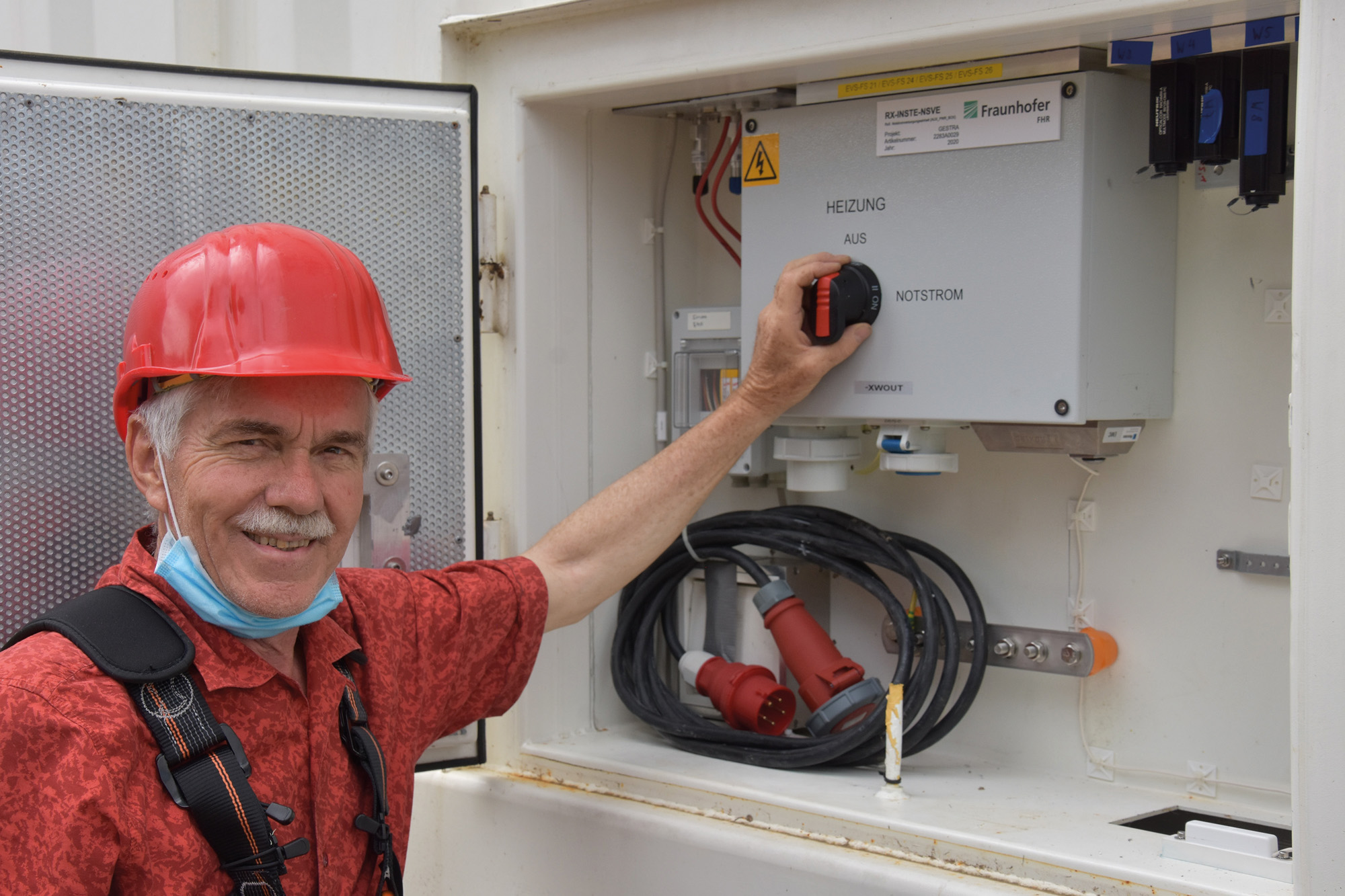GESTRA Milestones 2020
Transportation to Koblenz
Developed by Fraunhofer FHR on behalf of the German Space Agency at DLR (German Aerospace Center), the GESTRA (German Experimental Space Surveillance and Tracking Radar) space surveillance radar completed major steps in 2020. It is currently undergoing final integration at the new Koblenz site.
7 days, 100 tons, 200 kilometers: A logistical tour de force
The morning of June 25, 2020 marked the beginning of a perfectly planned project on Fraunhofer FHR's Wachtberg campus, the likes of which the Institute had never seen before: Loading the GESTRA system and transporting it to its final location at Schmidtenhöhe in Koblenz. Weighing almost 100 tons and measuring 4 m x 4 m x 18 m each and comprising the transmitting and receiving module as well as both radomes with a diameter of 5 m, a height of 4.50 m and a weight of 600 kg each, the two containers were ready for transport. After one day of pure preparation time, the containers and radomes were loaded onto the trailers over the next two days through perfectly coordinated teamwork by the Fraunhofer FHR staff and the logistics company. This required two cranes with maximum lifting capacities of 350 t and 500 t
respectively, whose combined forces were required to lift the heavy weight of the radar systems off the ground onto two 13-axle trailers. The heavy load got on the road on schedule at 10 p.m. on June 29, 2020. As well as many vehicles for safeguarding, the convoy was also accompanied by several police vehicles. Since the loaded containers including the trailer were significantly higher than 4.50 m, some highway bridges on the A3 would have been too low and the entire journey had to be made almost exclusively on country roads. In the middle of the night, around 1:30 a.m., the convoy crossed over the Rhine via the Bonn South Bridge. It then entered the Westerwald region. The second stage with a total distance of about 200 kilometers was completed the following night, finally leading to the destination. GESTRA was awaited there by representatives of the German Space Agency at DLR, the Federal Armed Forces and Fraunhofer FHR, as well as numerous media representatives. The two heavy-duty cranes were ready so that both containers and the radomes could be assembled at the destination in front of the spectators the same day.
Research & Science, Defense and Politics: Grand Ceremony for GESTRA Inauguration
On October 13, 2020, GESTRA was officially inaugurated and handed over to the German Space Situational Awareness Center. High-profile representatives from DLR, the Fraunhofer Society and defense and politics were in attendance. During a ceremony at Schmidtenhöhe, the speakers acknowledged the significance of GESTRA for Germany and Europe and the achievements of the project participants in the development of this cutting-edge technology. Speakers included Chairman of the German Space Agency at DLR Dr. Walther Pelzer; Aerospace Coordinator of the German Federal Government Thomas Jarzombek (MdB); Fraunhofer Executive Board Member Prof. Ralf Boris Wehrspohn; Commander of the Air Operations Command (ZentrLuftOp) GenLt Klaus Habersetzer; and Interior Minister of Rhineland-Palatinate Roger Lewentz. "Through this project, we are setting Germany apart as a location." GESTRA project manager at DLR Dr. Thomas Eversberg praised the research and development work on the space surveillance radar: "Based on our state-of-the-art systems, we are in a position to work right at the forefront of science".
After the speakers symbolically cut a ribbon to mark the opening, the guests and numerous media representatives present were able to see GESTRA for themselves. "This radar system is a piece of technology that is unique in Europe," Prof. Dirk Heberling emphasized during the event, also highlighting the special attachment which Fraunhofer FHR staff feel towards GESTRA. "I remember when the containers were delivered, employees pulled and grabbed the cables with their own hands, and that was on the weekend. This shows their commitment and passion for this project," said Prof. Heberling.
The media response to the unveiling of Germany's first space surveillance radar was huge, with print, TV, radio and social media reporting nationwide. Even the Tagesthemen news program ran a report. An exciting short film by Fraunhofer FHR summarizes the highlights of the GESTRA inauguration. The film is available at https://youtu.be/bT-oIld89Qs.
